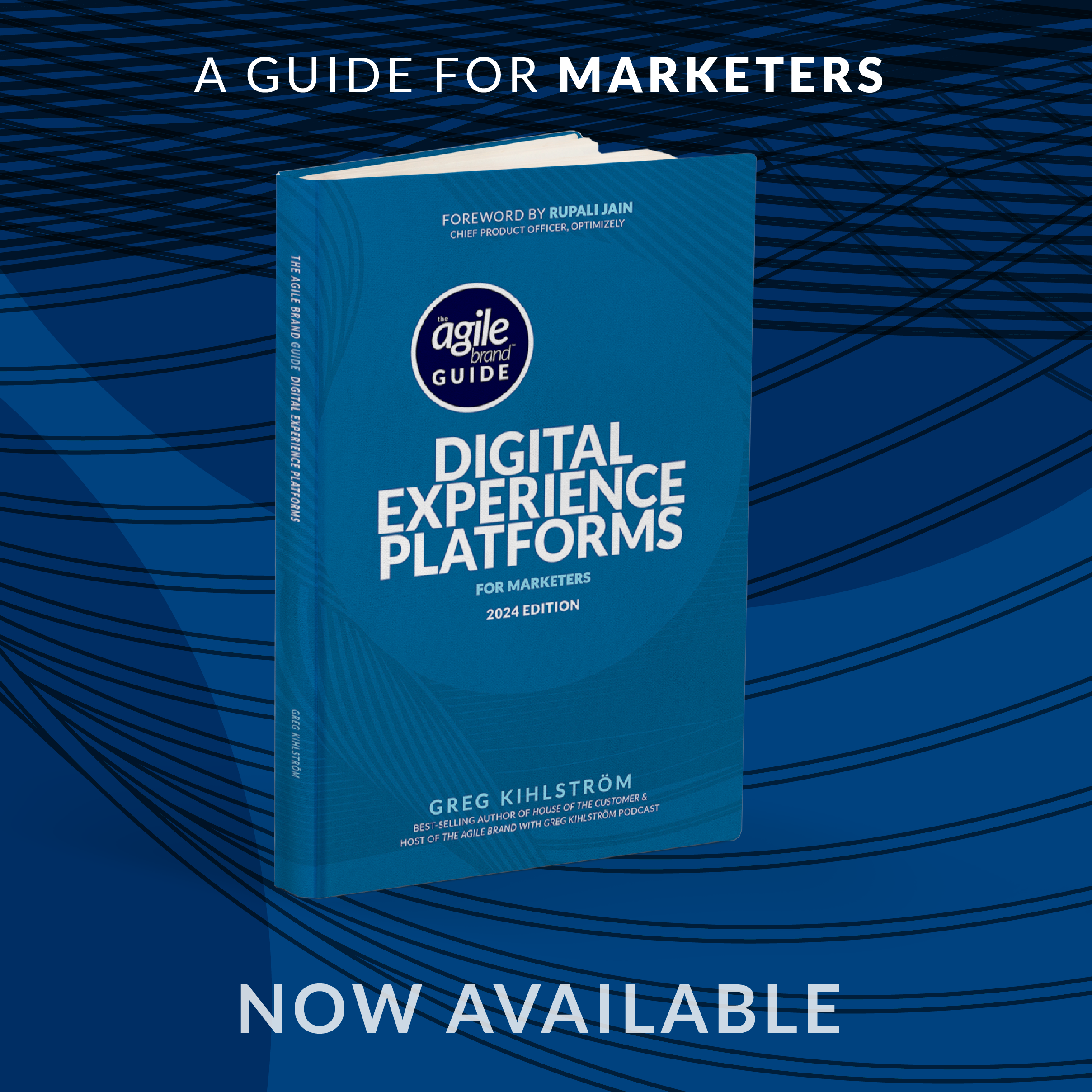This article was based on the interview with Yaniv Navot, SVP of Commercialization for Customer Acquisition and Engagement at MasterCard by Greg Kihlström, Marketing and AI keynote speaker for the The Agile Brand with Greg Kihlström® podcast. Listen to the original episode here:
For more than a decade, personalization has been touted as the holy grail of marketing—delivering the right message, to the right person, at the right time. And yet, in 2025, most organizations still fall short of executing it meaningfully and at scale. While the proliferation of customer data, advanced MarTech tools, and AI-driven innovation have improved the technical foundation, execution often lags behind ambition.
In a recent interview, Yaniv Navot, former CMO of Dynamic Yield and now SVP at MasterCard, laid out a pragmatic but compelling roadmap for achieving personalization maturity. His core message is that personalization isn’t a marketing tactic; it’s an organizational strategy that must be supported by the right people, processes, and platforms—or else risk becoming another underutilized tool in the tech stack.
Personalization is a Strategy, Not a Tactic
“I think of personalization maturity as a company’s ability to consistently deliver relevant, timely, and value-driven experiences across the journey,” Navot explained. “Not just in isolated campaigns, not just in isolated channels, but as a coordinated ongoing practice”
For marketing leaders, this means zooming out. It’s not enough to have a great personalization platform or a well-defined audience segment. Brands must integrate personalization into the broader operating model—across product, data, content, and engineering. Without this alignment, initiatives often get stuck in pilot purgatory, impressive in PowerPoint but inert in practice.
Navot warns that personalization is often mistakenly viewed as a point solution. Companies pour money into platforms but fail to do the harder work—changing how teams operate, how success is measured, and how decisions are made. He points to the need for a dedicated leader or “center of excellence” to champion personalization efforts across the enterprise. Without this anchor, efforts become fragmented and lack strategic coherence.
Four Signs of Personalization Readiness
When asked how he assesses personalization maturity, Navot shared a set of key indicators that should resonate with any CMO or marketing ops leader:
- Ownership: “Is there a clear team or leader responsible for personalization success across the journey? Or is it scattered across different functions?” he asked. Most organizations still structure around channels—email, web, mobile—despite customers expecting unified experiences.
- Resourcing: It’s not just about headcount, but skillset. Successful personalization programs require cross-functional fluency: content strategists, experience designers, analysts, engineers, and campaign managers all working toward a shared goal.
- Decision-Making: Are decisions test-and-learn driven? Is personalization embedded into planning and KPIs, or merely a one-off tactic for seasonal campaigns?
- Integration into the Operating Model: Mature organizations “treat personalization not as a feature, but as a way of working.” This includes aligning product, data, and content teams on shared goals and timelines.
Navot emphasized that “you can have the best tech in the world, but without the structure and accountability to support it, personalization would just stay stuck at pilot stages.”
The GenAI Layer: Creation Meets Orchestration
While machine learning and deep learning have long powered predictive models, the arrival of generative AI adds a creative dimension to personalization.
“GenAI doesn’t just predict, it produces,” said Navot. “Instead of choosing the best subject lines or images from a predefined set, it can generate a brand-new one in real time, tailored to the content or context of the visitor segment.”
Used properly, generative AI augments—not replaces—existing predictive systems. It opens the door to personalized messaging, real-time segmentation, and dynamic journey orchestration. But it needs orchestration to work. “GenAI is not just a magic button… it needs to be guided by behavioral signals, testing frameworks, and governance,” Navot cautioned.
A powerful example: traditional site search often falls flat when handling complex or nuanced queries. GenAI changes this. “You can describe your needs in plain language… and it responds with curated, intelligent suggestions,” he explained. No need to rely on templates or rigid product taxonomies. In the near future, websites may no longer be static at all—every user experience dynamically generated and adapted on the fly.
Why Composable Architecture Matters
All of this AI-powered innovation won’t work in a monolithic MarTech stack. Navot made a case for composable architecture as a core enabler of personalization at scale.
“Having a closed all-in-one system might check the boxes on paper, but in practice, it will limit your ability to move fast or plug in the right tools,” he said. Composability allows brands to reuse audience definitions, scale modular content, and accelerate experimentation—all without ripping and replacing entire platforms every time they want to evolve.
When evaluating new tools, he advised leaders to look for:
- Openness: “Does the platform offer robust APIs? Integrate easily with your existing stack?”
- Modularity: Adopt what you need today, and be able to scale or swap components tomorrow.
- Data Portability and Governance: Can you move data freely and control decision-making layers?
- Time to Value: Great platforms enable fast activation and insight generation—not just integration.
Navot didn’t sugarcoat it: composability is hard, and it depends on your team’s capability and organizational readiness. But for companies serious about long-term agility, it’s worth the effort.
Proving Value to the C-Suite
At the end of the day, marketing leaders must make the case for investment in personalization—not as a buzzword, but as a growth lever. “The most successful way I’ve seen is just showing value,” Navot said. “Tying personalized experiences directly to revenue and efficiency outcomes.”
Executives don’t want a platform demo. They want results. Personalization should be framed not as a nice-to-have, but as a way to drive incremental value from existing traffic and customer bases—often more cost-effectively than acquisition-heavy approaches. Short-term wins (like conversion uplift) should be linked to long-term strategic imperatives (like lifetime value and retention).
It’s a dance of vision and pragmatism. You need to make the future tangible—while also proving that today’s investment is moving the needle.
What Marketing Leaders Should Take Away
For personalization to succeed, marketing leaders must:
- Treat it as an organizational strategy, not a channel-specific tactic.
- Build cross-functional teams with shared goals and sufficient autonomy.
- Invest in infrastructure that prioritizes modularity, openness, and fast time-to-value.
- Use GenAI not as a gimmick but as a practical tool that enhances—rather than replaces—human-led strategies.
- Show value early and often, linking efforts directly to business outcomes.
As Navot put it, staying agile means “constantly adjusting to change without losing focus.” For marketers facing an endless flood of trends, tools, and customer expectations, that’s a discipline worth practicing daily.









